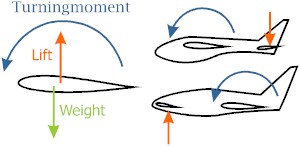

Selection Trade-offs within airfoil families:Ī thinner airfoil flies and lands a little faster and is smoother, but a similar one that is a little thicker can perform aerobatics in a tighter volume. They do not penetrate the air well but can stay aloft at very low speeds. Modified Flat bottom airfoils are used for powered aircraft that are willing to make the compromise of having more drag in exchange for slow flight or high lift capabilities. It is possible to trim this trait out, but it means spending hours tweaking the wing incidence, decalage (angle difference between the upper and lower wings of a biplane), and engine thrust. They are next to impossible to trim properly because they are extremely speed sensitive. True flat-bottom airfoils are generally a poor choice for any design. If the biplane is intended to do precision aerobatics, however, then a fully symmetrical airfoil should be used. If the plane is to fly slowly or carry a heavy load (but is not intended to do aerobatics) then a semi-symmetrical or under-cambered airfoil should be considered.įor secondary trainers, sailplanes and sport aerobatic biplanes a semi-symmetrical is common choice. While flat (slab) surfaces, which are symmetrical sections by definition, work well for tail surfaces up to a point they aren't as good as a true airfoil. A true aerobat should always have symmetrical tail surfaces too. If the plane is to be a precision aerobat then a symmetrical airfoil is most appropriate because it flies the same in any given attitude. Any differences between them will be small and on the order of landing a little faster and not an immediate loop into the ground on take-off.Ĭhoosing an appropriate airfoil family for any given design is usually simple. It should be noted that airfoils which have the same basic shape within a family, will also have common flight characteristics. This type of airfoil commonly found on flying wings without a horizontal stabilizer. Reflexed – The trailing edge turns up slightly causing the camber to change to negative toward the aft of the airfoil, giving a positive twist to the lift (positive to the front and negative to the rear). This shape produces the most lift of any airfoil, but also the most drag. Under-cambered – Mostly used on gliders (and WW I aircraft), the bottom closely matches the top with just some space in between.

This shape increases the camber of the rear section of the airfoil moving the center of lift aft, giving more gentle stall characteristics. This is actually a semi-symmetrical airfoil, but it’s the shape most people think of when you say flat-bottom. Modified Flat Bottom – Flat from main spar to trailing edge. This shape provides a fairly high camber and results in high lift, but can be structurally weak and hard to effectively use on models. Semi-Symmetrical – Like the picture shown above, the top and bottom are similar but the airfoil has a slight camber.įlat Bottom – Very uncommon in RC models, airfoil bottom is flat from leading edge to trailing edge. All other airfoils are cambered and will produce aerodynamic lift due to their shape moving through the air. This creates an airfoil without Camber, that also produces zero lift at a zero angle of attack. Symmetrical – Top and bottom are exactly the same. The most common families or groupings of airfoils are: Mean or Camber Line - is the line defined by the vertical mid-point of the airfoil at every point along the chord.Ĭamber - while the calculation of Camber is more complicated than I want to get into, it can be thought of as an average measurement of the distance between the Mean and the Chord lines divided by the Chord. Leading Edge - the foremost edge of an airfoil section.Ĭhord (or Chord Line) - is a straight line connecting the leading and trailing edges of the airfoil and the value C represents its length. A reasonable airfoil section can be made, given just these parameters.Ĭommon airfoil design terms (simplified): These are maximum thickness, maximum camber, position of max thickness, position of max camber, and leading edge radius. Airfoil geometry can be summarized by just a few parameters. I chose to include it specifically because it is fairly basic and without any extra info that most people don’t need.

The attached image was borrowed from a Paraglider Design Handbook. So here I will review the basics on airfoil design and selection, sticking to generalities that are easy to observe. Most modelers have to learn from experience, knowing that the subtleties between one airfoil and another close to the same shape will make very small differences.


 0 kommentar(er)
0 kommentar(er)
